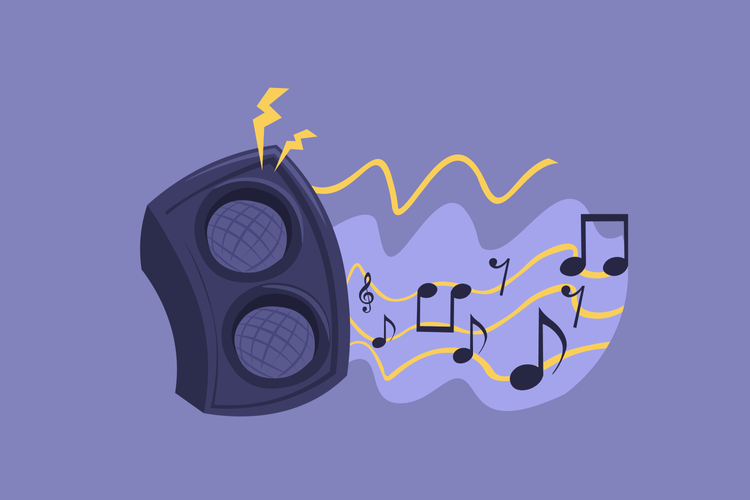How Accurate is Google Translate: An In-Depth Examination for English Learners


You will get a promo code with a discount for our app courses after reading this article.
Contents
Embarking on the journey to master English, you might frequently encounter Google Translate. Renowned for its ease of use and impressive language scope, it offers a helping hand to learners worldwide. Yet, the burning question persists: is Google Translate accurate? It’s vital to comprehend that while this tool’s utility is undisputed, its precision may vary. In this article, we’ll delve into the accuracy of Google Translate and explore its potential benefits and limitations to help English learners use it effectively.
The Mechanism behind Google Translate
Before discovering how reliable Google Translate is, it’s wise to comprehend how this tool works. As a ubiquitous tool in today’s interconnected world, it operates on sophisticated technology known as Neural Machine Translation (NMT). An evolution from older, rules-based systems, NMT offers a more fluent, context-sensitive approach to translation.
The core of NMT lies in its usage of artificial neural networks. These networks, akin to a simplified model of the human brain, learn to translate by processing vast amounts of bilingual text data. During this training phase, the system builds a mathematical model of a language, capturing patterns, grammatical rules, and even some level of context.
When a translation request is made, Google Translate uses this model to find the most statistically probable translation. It doesn’t simply translate word-by-word but views the sentence as a whole, aiming for a more natural, meaningful output.
However, it’s essential to note that NMT, while revolutionary, isn’t flawless. The system can struggle with nuances, idioms, and cultural context, as these aspects are challenging to learn from statistical patterns alone. Furthermore, the quality of the translation is highly dependent on the amount and quality of the bilingual text data the system was trained on.
How Accurate Is Google Translate: Factors to Consider
Regarding the accuracy of Google Translate, there are several factors to consider. While the tool can provide approximate translations for many languages, its performance can vary significantly based on the complexity of the language, context, and text type. Here are a few aspects to examine:
- Grammar. Google Translate generally performs well with simple, grammatically straightforward sentences. However, complex sentences with layered clauses can confuse the system, leading to translation errors.
- Vocabulary. The system has a vast database of words from numerous languages, allowing it to provide accurate translations of individual words or simple phrases. However, the translator may struggle to select the correct translation without sufficient context for words with multiple meanings.
- Idioms and colloquialisms. One area where Google Translate often stumbles is the translation of idiomatic expressions and regional colloquialisms. These are challenging because they don’t translate directly across languages and often require cultural knowledge that the system lacks.
- Pronunciation and intonation. Google Translate provides a text-to-speech feature, which can be a helpful tool for language learners. While the pronunciation is generally accurate for common words and phrases, it might lack human speech’s natural intonation and rhythm.
As you can see, Google Translate’s accuracy depends on several factors. It excels at translating simple sentences and individual words but may struggle with more complex language structures or nuanced cultural aspects.
Is Google Translate Accurate for Spanish and Other Languages?
Google Translate supports over 130 languages in total. However, the accuracy of its translations is not consistent across all languages. While it excels in dealing with popular languages, its performance varies when handling lesser-known or more complex language systems.
For languages such as Spanish, French, and Mandarin, some of the most widely spoken languages globally, it often demonstrates commendable accuracy. Thanks to the extensive data available for these languages, the tool’s Neural Machine Translation can efficiently decipher and generate relatively accurate translations. The tool’s proficiency can dip when dealing with less common languages like Welsh, Swahili, or Basque. The translations may not always hit the mark with less training data available for these languages.
Now, let’s look at how good Google Translate is. A quote from 2021 research conducted by the UCLA Medical Center states, “Google Translate preserved the overall meaning for 82.5% of the translations. But the accuracy between languages spanned 55 to 94%.” The spectrum of accuracy is vast, highlighting the variability of the tool’s performance.
The translator performs optimally when translating literary texts into English. Yet, it stumbles when tasked with casual, informal phrases, achieving an accuracy of just 72% when translating casual English texts into other languages. Furthermore, the accuracy dips significantly when translating complex phrases, especially in the medical field. A 2014 study highlighted that Google Translate’s accuracy in translating intricate medical phrases was 57.7%.
However, it’s noteworthy that Google Translate can occasionally surpass expectations. For example, a study on the usability of machine translation for website translation reveals “10 out of 14 translators were positively surprised by the results.” This suggests that Google Translate sometimes delivers more precise translations than anticipated.
2
Enhancing Google Translate Accuracy: Tips and Tricks
While Google Translate’s accuracy is not flawless, English learners can use several tips and tricks to maximize its utility. Here are some ways you can make the most of this tool:
- Simplify your sentences. The translator works best with simple and concise sentences. However, a complex sentence with multiple clauses might confuse the algorithm, leading to a garbled translation. Therefore, breaking complicated sentences into simpler ones can help achieve more accurate translations.
- Mind your grammar and punctuation. Proper capitalization and punctuation play a pivotal role in ensuring translation accuracy. Google Translate considers these elements when translating, and missing or incorrect grammar and punctuation can lead to erroneous translations.
- Provide sufficient context. The tool can struggle with words or phrases with multiple meanings, making it harder for the algorithm to select the appropriate translation. Therefore, giving adequate context by adding more sentences or clarifying any cultural references in your text could significantly enhance accuracy.
- Avoid idiomatic expressions and slang. The algorithm finds it challenging to understand idiomatic words, colloquial phrases, and slang deeply rooted in a language’s cultural context. Substitute these with more standard, formal language for a more accurate translation.
- Use the ‘contribute a better translation’ feature. The translator allows users to suggest better translations, which not only helps improve the overall accuracy of the tool but also enables you to tailor the translations more precisely to your needs.
Those curious about how accurate Google Translate is can now make the most of this tool by applying these tips and tricks to enhance its precision. The more you understand the limitations and factors that affect Google Translate’s accuracy, the better you can use it in your language learning journey.
Beyond Google Translate: Other Language Translation Tools
While Google Translate has garnered widespread recognition, other powerful translators are also available, offering unique features that could prove helpful to language learners.
- DeepL. It is an AI-powered translation tool highly praised for its superior accuracy and ability to provide translations that read more naturally than many competitors. Although DeepL supports fewer languages than Google Translate, the high quality of its translations is hard to overstate. Its neural networks are trained on various texts to deliver translations that often feel close to the human-produced text.
- Microsoft Translator. This tool from Microsoft is comprehensive, supporting text, voice, and image translations across a range of languages. One standout feature is its real-time conversation translation ability, making it an excellent tool for facilitating multilingual conversations for business meetings or travel.
- Papago. Developed by South Korea’s largest search engine, Naver, Papago specializes in translating East Asian languages such as Korean, Japanese, and Chinese. It sports a user-friendly interface and offers voice, image, and text translations, making it a valuable resource for those studying languages from this region.
- Reverso. Reverso stands out with its context-based translation approach. Beyond mere word-for-word translation, it provides examples of how words and phrases are used in real-life situations.
These are just a few language translators available to English learners. If you are interested in whether Google Translate is good, compare the results with other tools and see which works best for you. In addition, by exploring beyond Google Translate, you may find new resources that better suit your needs and increase accuracy for specific languages or contexts.
Promova – Your Language Learning Companion
Are you on a quest to learn English or another language? Then, Promova is the perfect resource for you! Our platform provides an extensive range of courses suitable for all levels, from fundamentals to advanced skills, allowing you to improve your writing, vocabulary, and grammar.
Promova’s mobile application is available on iOS and Android devices, offering flexible study at your own pace wherever you are. With a comprehensive library of resources, including vocabulary lists and interactive quizzes, you can easily memorize words and test your knowledge.
If real-life speaking practice is what you crave, look no further than Promova’s Conversation Club! Meet fellow language enthusiasts to engage in fun discussions on various topics while perfecting your conversational skills under the guidance of our certified tutors.
And if you want more personalized instruction tailored to your unique learning style, our platform also offers one-on-one sessions with expert teachers. Whether preparing for exams such as TOEFL or IELTS or simply wanting to improve your overall language skills, our experienced trainers will help you achieve fluency in no time. So start your journey today with Promova and sign up for a free lesson to discover how effortless and fun language learning can be!
Conclusion
So, is Google Translate correct? The answer is not a simple yes or no. The tool is an incredible resource for learners, helping them communicate in different languages effectively. However, its accuracy varies depending on the translated text’s grammar complexity and context sensitivity.
Overall, Google Translate is a great starting point for anyone looking to understand or translate phrases quickly from one language into another. But if learners want more precise translations with natural-sounding speech output, the tips and alternative tools discussed in this article could be helpful. Finally, it’s important to remember that while language translation technology advances incredibly, it cannot replace the nuances and richness of communication that human interaction provides.
Use your discount and learn languages with Promova
Start learningFAQ
Can Google Translate help me learn a new language?
It can be a helpful tool to get the gist of a text, learn basic phrases, or understand the meaning of words in a new language. However, it shouldn’t replace comprehensive language learning resources like courses, textbooks, and interactions with native speakers.
Why does translation accuracy differ between languages?
The accuracy of translation can vary due to several factors, including the complexity of the language, the availability of bilingual text for machine learning, and the structural similarities between the source and target languages.
Can Google Translate help with the pronunciation of words?
It offers a feature that allows you to listen to the pronunciation of the translated word or phrase. It will be helpful for language learners who are trying to improve their pronunciation of new words. However, it’s important to note that the tool may not always capture nuances in intonation and rhythm as accurately as a human speaker.
Are there any browser extensions available for Google Translate?
Yes, Google provides a Chrome extension for the tool, which can automatically translate an entire webpage or selected text. You can also find browser extensions developed by third-party providers that offer additional features such as pronunciation tools, customized translation options, and keyboard shortcuts.



Comments